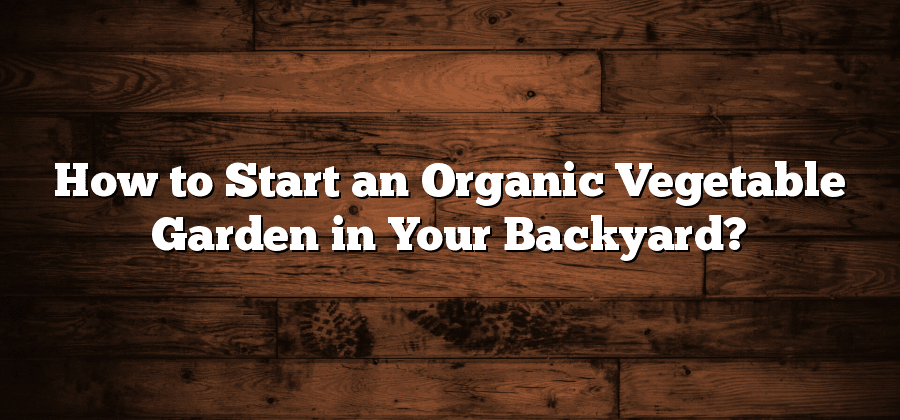Selecting the Ideal Location for Your Garden
When it comes to selecting the ideal location for your garden, there are several factors to consider. First and foremost, it is important to choose a spot that receives ample sunlight throughout the day. Most vegetables and flowers require at least 6-8 hours of direct sunlight to thrive. Take a close look at your yard and identify the areas that receive the most sunlight. This will help you determine where to set up your garden beds or planters.
In addition to sunlight, it is also crucial to assess the availability of water in your chosen location. Ideally, your garden should be in close proximity to a water source, such as a hose or sprinkler system. This will make it easier to water your plants and ensure they receive the necessary hydration. Adequate drainage is another important consideration – avoid low-lying areas that tend to retain water, as this can lead to root rot and other problems. By carefully evaluating the sunlight, water access, and drainage of different spots in your yard, you can select the ideal location for your garden and set yourself up for gardening success.
Assessing the Soil Quality in Your Backyard
Soil quality plays a crucial role in the success of your garden. Before you start planting, it is essential to assess the condition of the soil in your backyard. Fortunately, there are several simple methods you can use to determine the quality of your soil.
One of the easiest ways to assess soil quality is by observing its texture. Take a handful of soil from your backyard and feel it. Does it feel gritty or smooth? Sandy soil tends to feel gritty, while clay soil feels smooth and sticky. Loamy soil, which is considered the best for gardening, has a balanced texture that feels crumbly and retains moisture well. By understanding the texture of your soil, you can make informed decisions about how to amend it for optimal plant growth.
Choosing the Right Organic Seeds or Seedlings
When it comes to starting a garden, one important factor to consider is choosing the right organic seeds or seedlings. The quality of your seeds or seedlings can greatly impact the success of your garden and the health of your plants. So, it’s crucial to invest some time and effort into selecting the best options available.
When choosing organic seeds or seedlings, there are a few key factors to keep in mind. First, make sure to look for varieties that are adapted to your local climate and growing conditions. This will help ensure that your plants thrive and produce a bountiful harvest. Additionally, opt for seeds or seedlings that are certified organic. This means they have been grown without the use of synthetic pesticides, herbicides, or genetically modified organisms, aligning with your desire to maintain an organic garden. Finally, consider the source of your seeds or seedlings. Look for reputable suppliers who specialize in organic gardening, as they are more likely to provide high-quality products. By following these guidelines, you can choose organic seeds or seedlings that will give your garden the best chance of success.
Preparing the Soil for Planting
In order to ensure healthy and thriving plants in your garden, it is essential to properly prepare the soil before planting. This crucial step not only helps create a favorable environment for your plants, but it also promotes nutrient absorption and root growth. Here are some key factors to consider when preparing the soil for planting.
First and foremost, it is important to remove any weeds, roots, or debris from the designated planting area. Weeds can compete with your plants for nutrients and water, hindering their growth and development. By clearing the area of unwanted vegetation, you give your plants a better chance to flourish. Additionally, be sure to remove any large rocks or obstacles that could impede root growth or disrupt planting. Using a garden rake or hoe can help you accomplish this more efficiently.
Next, it is advisable to amend the soil with organic matter to improve its structure and fertility. Organic matter, such as compost, well-rotted manure, or leaf mold, helps retain moisture, enhances drainage, and provides essential nutrients for plant growth. Spread a layer of organic matter over the planting area and mix it thoroughly into the soil to ensure even distribution. This will help create a nutrient-rich environment that will support the growth and development of your plants.
By following these steps, you will be well on your way to preparing a nutrient-rich soil for your garden. Stay tuned for the next section, where we will explore effective practices for implementing organic pest control measures to protect your plants from damage and maintain their vitality.
Implementing Organic Pest Control Measures
One of the key aspects of maintaining a successful organic garden is implementing effective pest control measures. By utilizing organic techniques, you can protect your plants from harmful pests without the use of harmful chemicals. There are several strategies you can employ to keep pests at bay in a natural and environmentally friendly way.
First and foremost, prevention is key. One of the best ways to prevent pests from infesting your garden is by regularly inspecting your plants for any signs of pest activity. Look for chewed leaves, discolored foliage, or evidence of insects. By catching the problem early, you can address it before it becomes an infestation. Additionally, practicing good garden hygiene by regularly removing weeds and debris can help deter pests from taking up residence in your garden. Remember, a clean and tidy garden is less appealing to pests.






